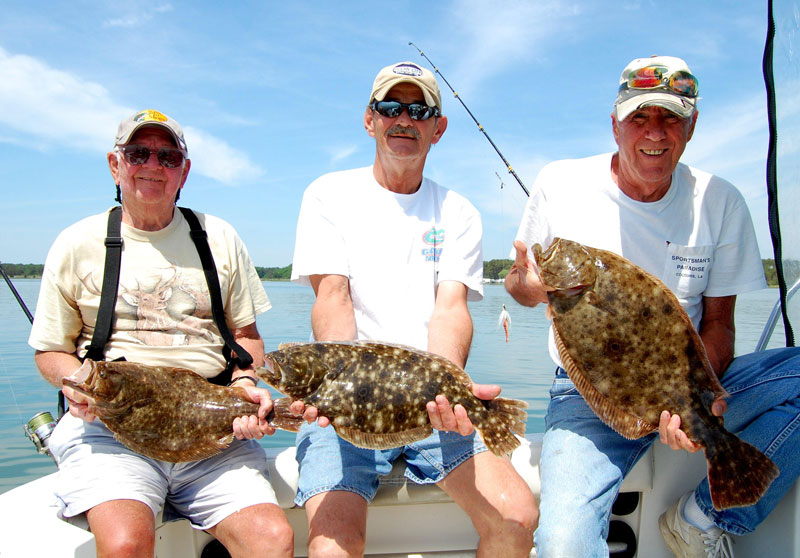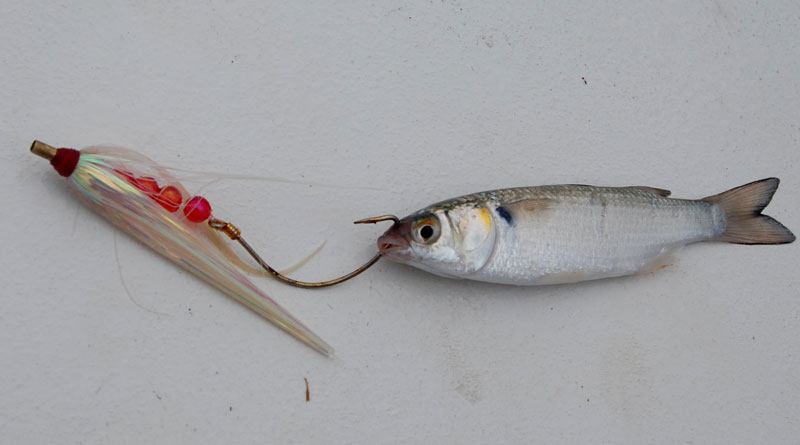Fish like bigeye tuna and marlin might steal the spotlight all summer long, but as fall sets in making the time for those long offshore runs gets tougher and tougher. The kids have gone back to classes. Moms and Dads are back to that daily grind called work, passing each day while dreaming of bent rods or standing on a white sandy beach, listening to the gentle sound of waves breaking upon the shoreline with one eye on the rod tips. This transition to the fall season leaves coastal bays relatively deserted compared to summer’s hustle and bustle of boat traffic and anglers everywhere; now it’s mostly resident anglers who are fishing these waters, and they are few and far between. It seems like only yesterday your fingers were covered in anti-seize as you reassembled the lower unit on your outboard after installing a new water pump, in preparation for the upcoming spring flounder season. But with cool nights, falling water temperatures, and the shortening of daylight now one the way, those flounder feel a new stirring inside.

The deep water off our coast are beckoning them to return for winter. In the fall flounder make their way out of the back bays towards the inlet, which concentrates the fish and provides great opportunity for anglers. Flounder are not picky eaters, but just like humans, they have preferences. And after chasing the flatfish for over 50 years, no one will convince me that live finger mullet are not their favorite fall meal – hands-down. Those mullet are also migrating at this time of year, and just as we look for concentrations of predators, the flounder look for concentrations of prey. Time after time on my boat, whoever had live mullet on the end of the line, compared to minnow/squid combo or bucktails/Gulp! combos, out-fished everyone else. Live spot is also a flounder delicacy, along with live peanut bunker (menhaden), but I’ve found no bait outperforms live mullet for fall fish.
The problem with mullet is obtaining them; you will have to use a cast net, as they aren’t normally available alive at bait shops. Schools of mullet are easy to identify by surface ripples created on calm days as they swim along the edges of the marshes. But mullet are quick, and catching them is nothing like cast netting menhaden. The cast net must be thrown towards the front of a moving school if success is to be found. Practice throwing in the yard, so when opportunity comes knocking, the livewell will be full of flounder candy.
Once bait is obtained, concentrate your efforts on the last hour of outgoing tide. Be sure to continually bounce your weight on and off the bottom. Bouncing not only attracts the flounder, it also helps prevent snags. But snags are around in all the inlets so be prepared with extra rigs ready to go; it’s the cost of fishing prime areas. During the slack tide between the incoming or outgoing, stay in the main channels. Once the tide starts rolling back in (making it difficult to hold bottom in deeper channels) relocate and try drifting shallower areas.
Rig up by using a single hook (3/0 to 6/0 depending on the mullet size) on a 30-inch leader, with a skirt, beads, and spinner, along with a fish-finder rig. Insert your hook in only the upper part of mullet’s mouth, which will allow the mullet to be able to breath and stay lively longer. Although, with a little luck that mullet won’t be down there very long!

No Boat? No Problem
In Indian River, casting from the north side inlet rocks can be very effective. However, the entire area is a rig-eating zone with endless snags. Bring plenty of extra gear. Ocean City anglers can try fishing from the route 50 bridge (add a bridge net to your gear list or you may watch a keeper fall off the hook in mid-air), or off the bulkhead from 2nd street down to 4th street, behind Skate Bowl Park. There is also a pier at the end of 9th street that can be productive, and the Ocean City Fishing Pier at the inlet. Virginia Beach anglers can try the rocks at Rudee, although this is another spot where again there are snags aplenty and you’ll lose gear here on a constant basis.
Coastal Inlet Intel, N2S
Indian River – Extremely fast-moving water where the inlet tightens means that drifting well inside the bridge is usually more effective than farther down the inlet. The channel edges anywhere from the west tip of Burton Island down to the park cottages is a good bet. The “Ditches” on either side of Middle islands, and Massey’s Ditch, can all be productive as well.
Ocean City - Drifting from fourth street southward to the route 50 bridge is a good bet on the last of the outgoing assuming the water is clear and not dirty. Otherwise, the end of an incoming tide will be the best bet. When the tide’s roaring try the “fish bowl,” which is the area on the north side of the 50 bridge, midway between the mainland and Ocean City’s main channel. Use caution entering this area, as there’s a sandbar running between it and the main channels. Once inside, water depth will range from three to seven feet. Just in front of the coast guard station at the Ocean City inlet is also popular (just don’t block entrance or risk a scolding) along with drifting the main channel behind Assateague Island.
Wachapreague – All the usual areas here can produce in the fall (see Flatfish Fantasyland: Wachapreague, VA for details). However, late in the season when the fish are pushing out, the area out in front of the old Coast Guard station can get red-hot. The end of the outgoing is often best when the bay waters are clear, but if they’re riled up the incoming may be better.
Lynnhaven – The channel edges running out of Lynnhaven can hold awesome flounder fishing, however, particularly on weekends it can also have a lot of boat traffic as there are more year-round residents in the area than in most coastal beach-town areas. Many flounder anglers will also focus on the channel between Humes Island and the mainland, or slide out to the CBBT.
Rudee – This is a fairly compact inlet, and simply drifting the stretch from the bridge out to the inlet itself is a good bet. This is another very snaggy area, though, so once again be sure to bring plenty of extra gear and don’t be frustrated when you snag and break off – it’s all part of the game.
Yup, summer may be drawing to a close – but flounder fishing is just about to reach its fall peak.
- By John Unkart, author of Offshore Pursuit and Saltwater Tales.